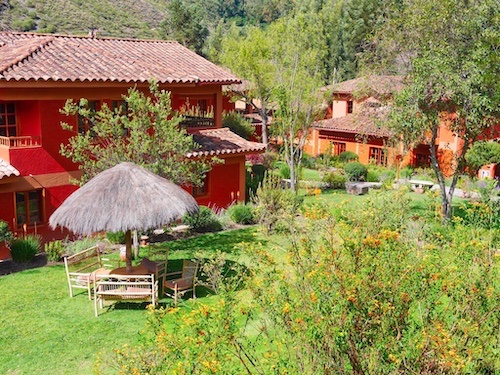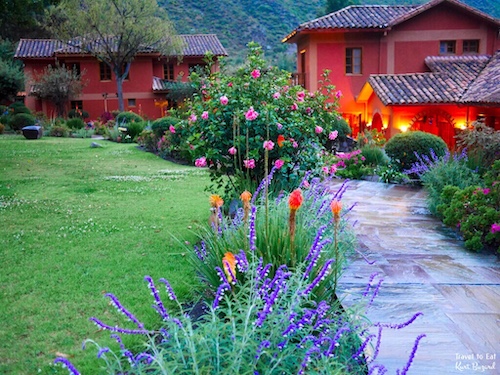
We decided to stay at the Hotel Pakaritampu which is a 3-star hotel conveniently located near Ollantaytambo ruins, with quick access to the train station. Because Ollantaytambo is 1,000m (3281ft) below Cusco (which is 3,400m or 11155ft above sea level), it provides a very good location to begin the acclimatisation process. In fact many visitors to the region travel directly to the Sacred Valley after landing in Cusco to reduce the likelihood of experiencing altitude sickness. We stayed in Ollantaytambo for two days to acclimate and to enjoy the the nearby Inca ruins. In the process we got to know the truly beautiful and historic town of Ollantaytambo.
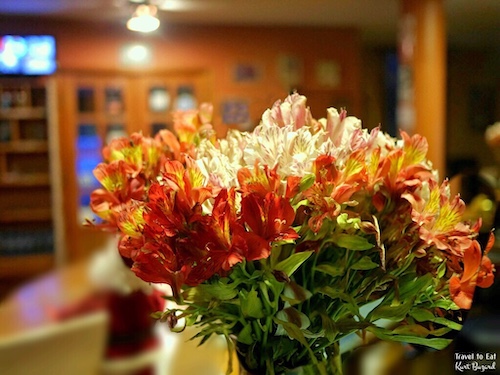
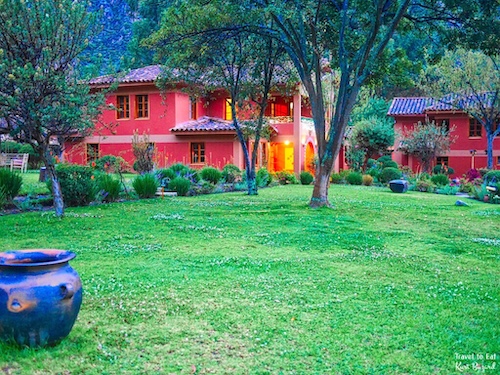
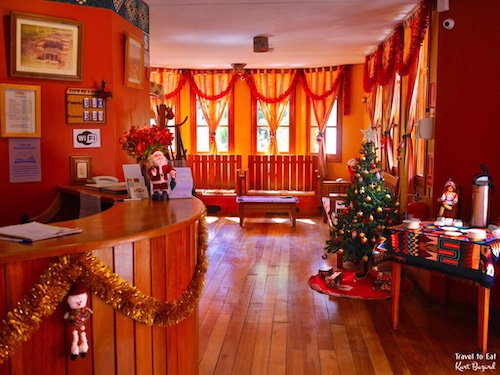
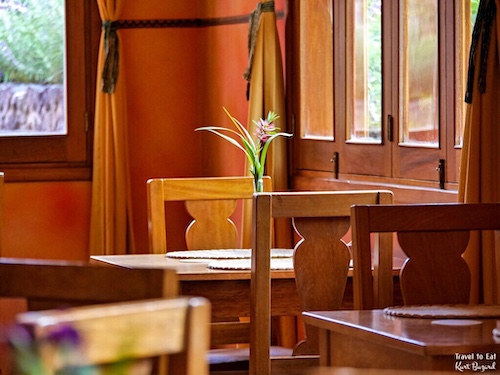
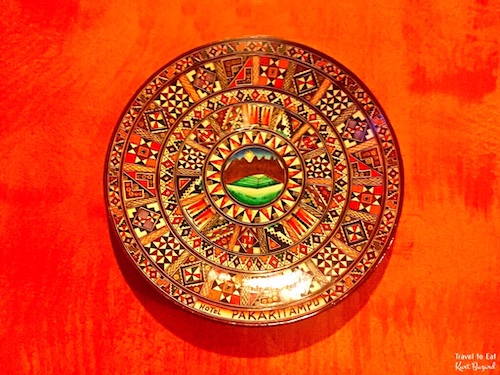
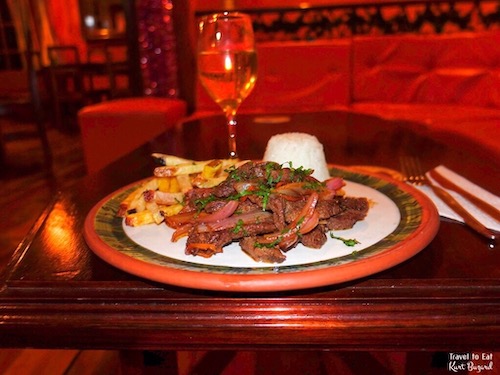
As you can see, the hotel is very rustic, with lots of wood in the interior. They have a restaurant and a bar upstairs. The food is healthy, large portions and fairly good, The staff is friendly and the place is clean. However the beds are a little hard and the rooms large but unheated. But you do not stay in this hotel just for the creature comforts, the gardens that surround the Pakaritampu Hotel are exceptional; beautiful flowers, enormous hummingbirds, other birds of all sorts while alpacas and lamas roam freely on the premises. It is a peaceful place to return after a day of sightseeing.
The Gardens
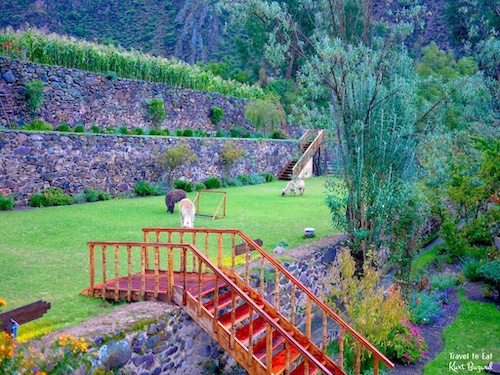
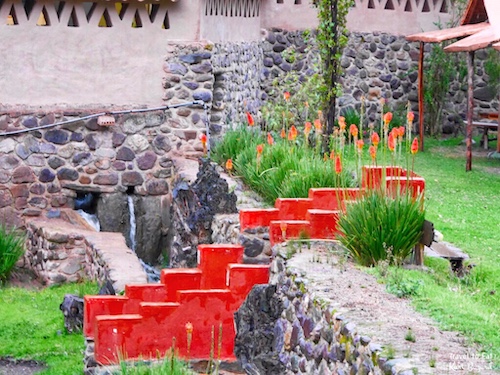
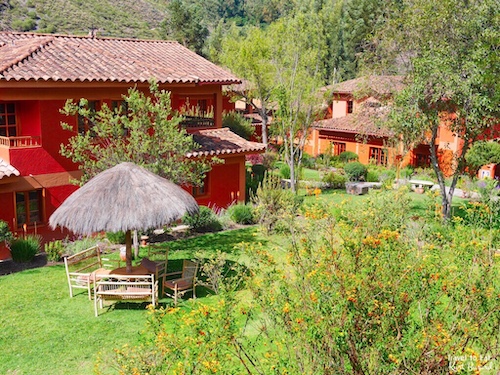
Peruvians appear to be keen gardeners and with a climate that favors plants of all kinds, they have planted spectacular flowering plants from all over the world. Many of the plants are placed to encourage birds and in particular hummingbirds. As you can see, part of the gardens are arranged on terraces with a fresh water stream running from the Patakancha river.
Alpaca
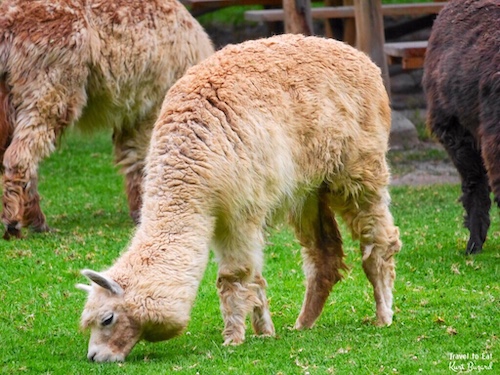
They have alpacas grazing on the property. At first glance, alpacas may look a lot like their camelid cousin the llama, but there are a variety of differences between these two South American animals. Alpacas generally weigh in at around 150 pounds while llamas can get as heavy as 400 pounds. At the shoulder, an average alpaca stands between 34 and 36 inches, while a llama generally ranges between 42 and 46 inches. Llamas have a longer face; an alpaca’s face is a bit more blunt, giving them a “smooshed in” look. Alpaca ears have short spear-shaped ears while llamas have much longer, banana-shaped ears.
Kniphofia
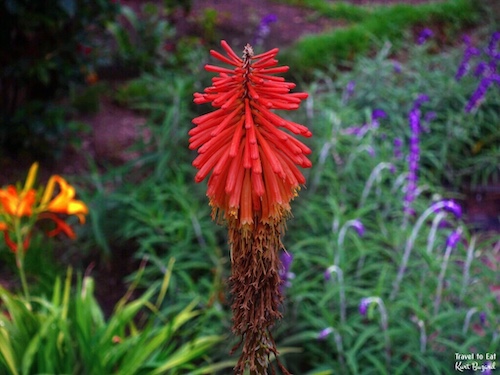
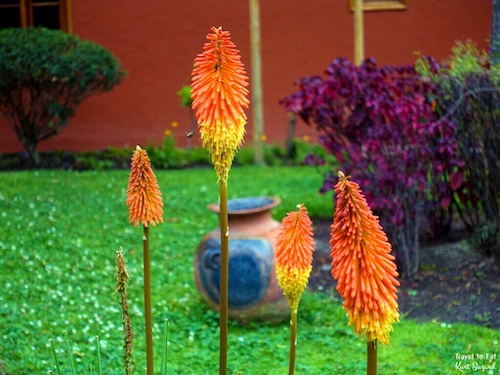
Kniphofia, also called tritoma, red hot poker, torch lily, knofflers or poker plant, was first described as a genus in 1794 by Johann Hieronymus Kniphof and is native to Africa. Herbaceous species and hybrids have narrow, grass-like leaves 10–100 cm (4–39 in) long, while perennial species have broader, strap-shaped foliage up to 1.5 m (5 ft) long. All plants produce spikes of upright, brightly colored flowers well above the narrow grass shaped leaves, in shades of red, orange and yellow, often bicoloured. The flowers are deepest in color as a bud and fade as the flowers open. The flowers produce copious nectar while blooming and are attractive to bees, hummingbirds and New World orioles.
Giant Hummingbird
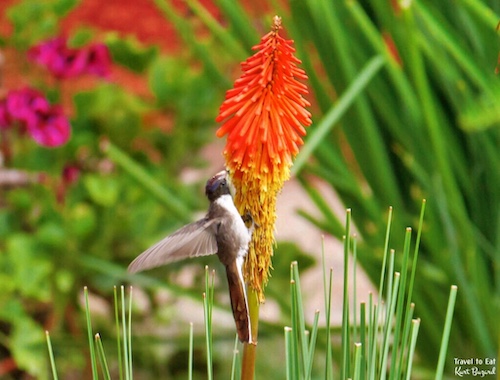
When I first saw these hummingbirds I almost couldn’t believe it. These are an enormous size for a hummingbird. The giant hummingbird (Patagona gigas) is the largest member of the hummingbird family, weighing 18–24 g (0.63–0.85 oz) with a wingspan measuring approximately 21.5 cm (8.5 in) in length, and length of 23 cm (9.1 in). This is approximately the same length as a European starling or a northern cardinal, though the giant hummingbird is considerably lighter due to its more slender build and fairly long bill. It is the only member of the genus Patagona. This weight is almost twice that of the next heaviest recorded species, and ten times that of the smallest humming bird, the bee hummingbird. Patagona gigas peruviana has an overall yellowish brown appearance as well as the presence of a white on the chin and throat, where Patagona gigas gigas has more of a olive green/brown colouration and absence of white on the chin and throat.
Salvia leucantha
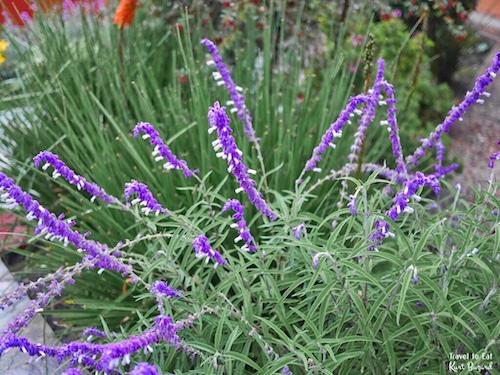
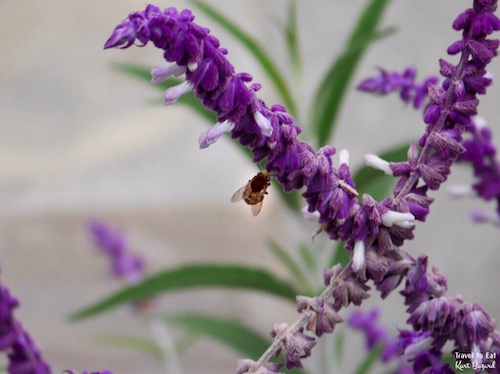
Salvia leucantha (Mexican bush sage) is a perennial that is native to subtropical and tropical conifer forests in central and eastern Mexico. The flowers are usually white, emerging from colored bracts. It is not frost hardy, but is often grown in warmer latitudes for its prominent arching velvety blue or purple inflorescences.
Streptosolen jamesonii
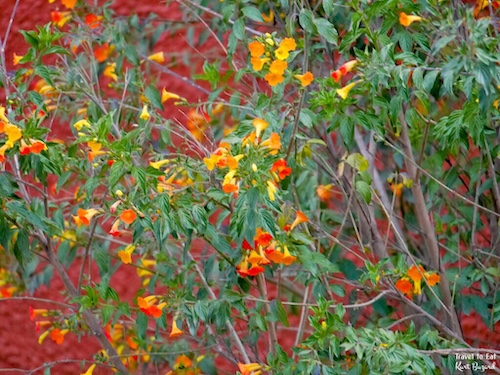
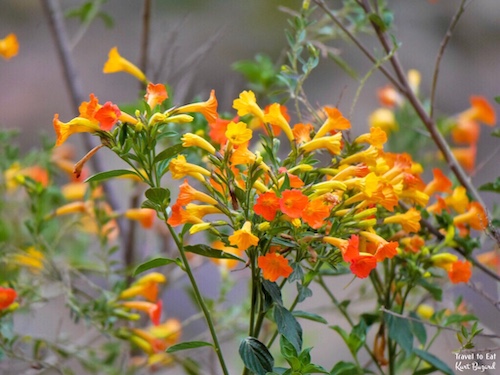
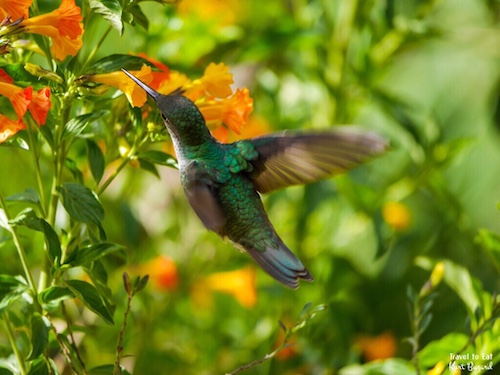
Streptosolen is a genus of flowering plants with a single species, Streptosolen jamesonii, the marmalade bush. It is an evergreen shrub of the Solanaceae family that produces loose clusters of flowers gradually changing from yellow to red as they develop, resulting in an overall appearance resembling orange marmalade (thus the name), found in open woodlands of Colombia, Ecuador, and Peru. The blooms can appear nearly all year in mild-winter areas, but the heaviest flowering is from spring through fall. With a minimum temperature of 7 °C (45 °F), this plant must be overwintered indoors in frost-prone areas.
Fawn-Breasted Tanager
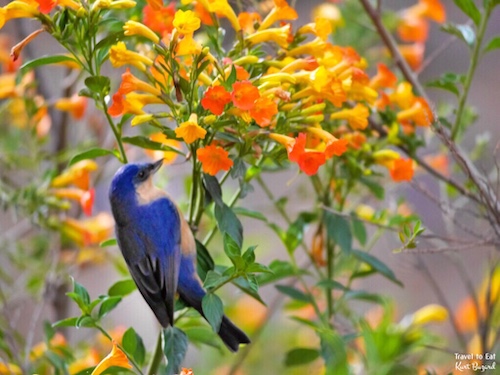
The Fawn-Breasted Tanager (Pipraeidea melanonota) occurs in the Andes of northwestern Argentina, Bolivia, Colombia, Ecuador, Peru and Venezuela, as well as in the highlands of northeastern Argentina, south Brazil, Paraguay and Uruguay. This species primarily is found in bushy pastures, second growth, gardens, and forest edges. It forages mainly on insects, and rarely joins mixed species flocks. Note the unusual hooked beak in the picture above.
Fuschia
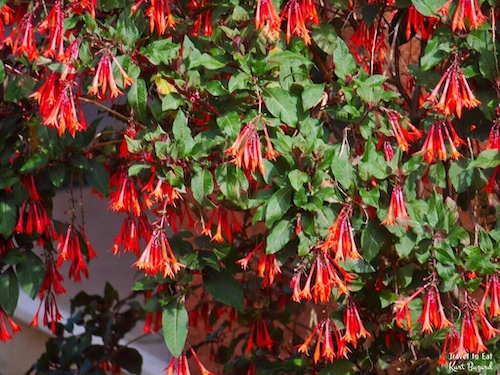
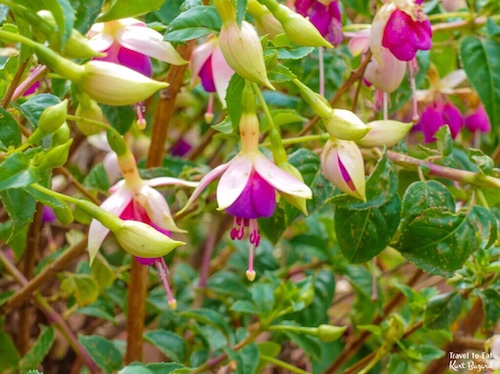
They have some beautiful fuschia plants at the Pakaritampu hotel. The majority of Fuchsia species are native to Central and South America. Fuchsia flowers can be “single” having four petals, “semi double” having 5, 6 or 7 petals and “double” having 8 or more petals. Fuchsia boliviana is a species of Fuchsia native to southern Peru, Bolivia and northern Argentina. They are found all over the Sacred Valley and also in Machu Pichu. Fuchsia boliviana is an example of a single fuschia flower. Fuchsia “La Campanella” is a pretty shrub fuchsia, bearing small, semi-double flowers with dark pink petals and white-pink sepals. It is a popular hybrid that seems to do well in the Sacred Valley.
Hibiscus
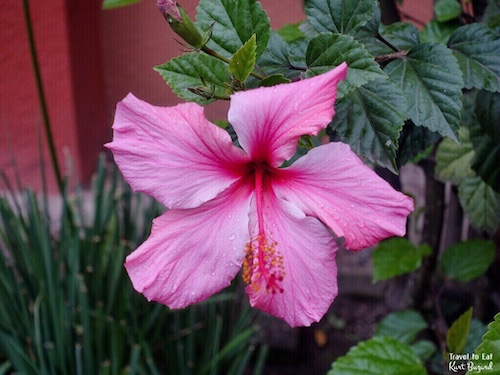
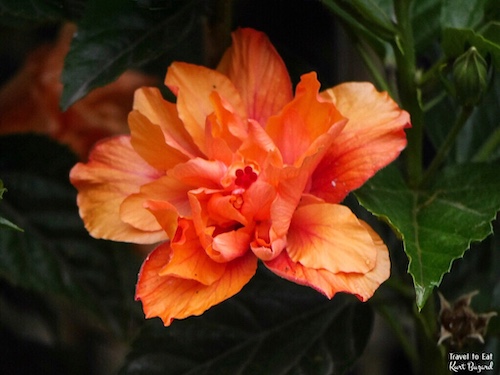
Hibiscus is a genus of flowering plants in the mallow family, Malvaceae. The genus is quite large, comprising several hundred species that are native to warm-temperate, subtropicaland tropical regions throughout the world. Hibiscus rosa-sinensis, known colloquially as Chinese hibiscus, China rose, Hawaiian hibiscus, and shoeblackplant, is a species of tropical hibiscus native to east Asia. Hibiscus come in single and double forms as well, as seen above. Double Peach Hibiscus features bold peach round flowers with red eyes at the ends of the stems from mid summer to early fall. It’s glossy pointy leaves remain dark green in color throughout the year.
Albutilon
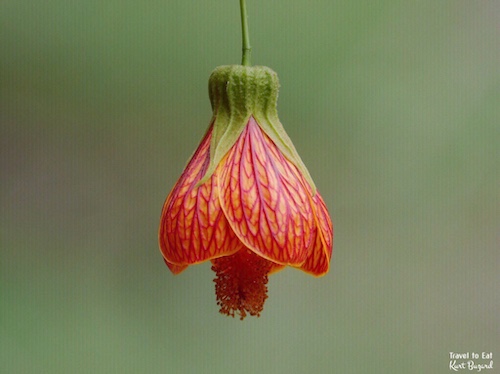
Albuteron is also a member of the mallow family and they have a number of large plants at the Pakaritampu Hotel. Abutilon pictum commonly known as Redvein Abutilon, Red Vein Indian Mallow, Redvein Flowering Maple, Chinese-lantern or Red vein Chinese lanterns is native to southern Brazil and Argentina, Paraguay and Uruguay. The yellow to orange-red bell shaped flowers have prominent dark red veining, with five petals 2–4 cm long. It blooms from April to September, and longer in warmer subtropical areas. Hummingbirds and bees love these flowers, it seems that almost all the plants here were planted to attract them.
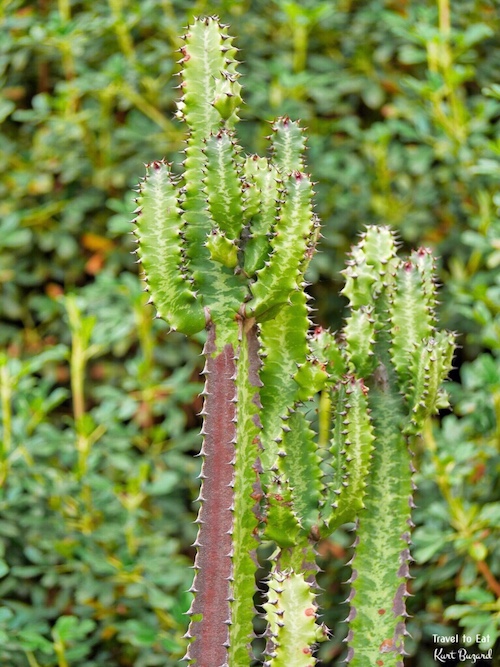
Obviously there are more flowering plants and birds than the ones I have presented here, these are just the highlights. If you are going to visit Machu Pichu, the garden of the Pakaritampu hotel is just one more reason you should plan a visit to Ollantaytambo. As always I hope you enjoyed the post please leave a comment.
[mappress mapid=”210″]
References:
Pakaritampu Hotel: http://www.pakaritampu.com/
Alpaca vs Llama: https://www.openherd.com/articles/61/rising-sun-alpacas—alpaca-vs-llama-what-are-the-differences
Llama vs Alpaca: http://modernfarmer.com/2015/09/difference-between-llama-and-alpaca/
Hibiscus Double Peach: http://plants.tagawagardens.com/12130017/Plant/19876/Double_Peach_Hibiscus
Sent from my iPad

